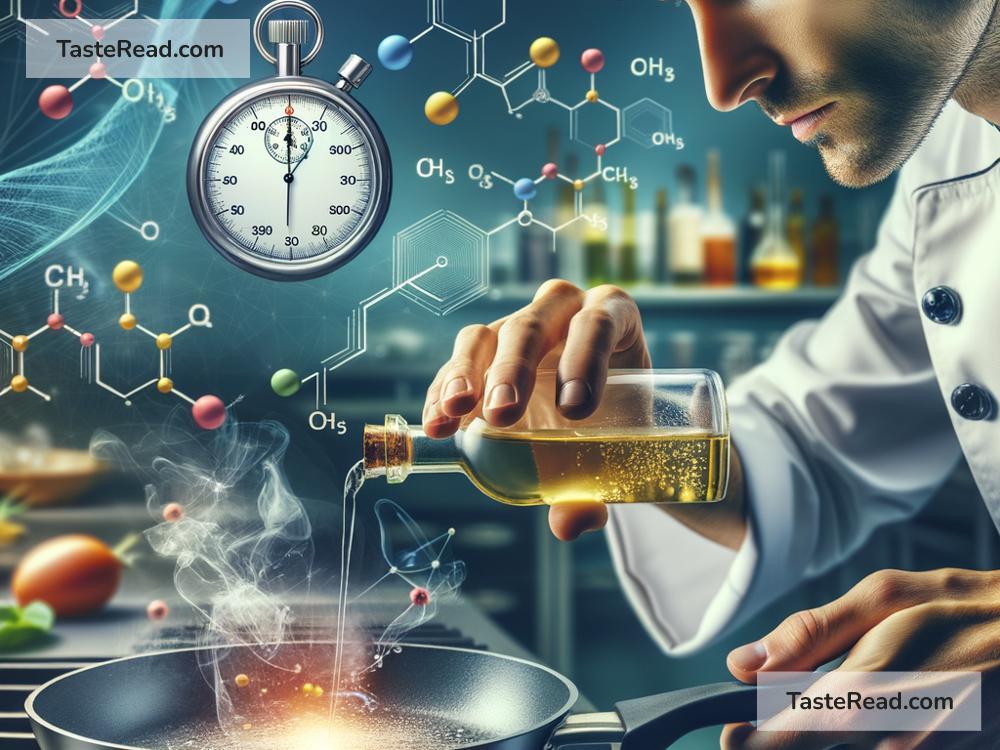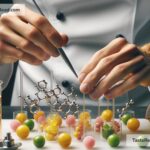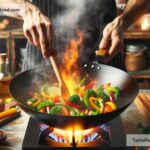The Science of Cooking with Chemical Speed: Techniques and Tips
Cooking is an art, but it’s also a science! When you put food on the heat or mix ingredients, you’re not just making a meal—you’re creating physical and chemical reactions. These reactions can transform a simple batch of ingredients into a delicious dish. By understanding the science behind cooking, you can speed up the process, improve taste, and even troubleshoot common cooking problems.
In this blog, we’re diving into “chemical speed”—a term referring to how quickly (and efficiently) chemical reactions happen during cooking. From caramelization to fermentation, let’s explore techniques and tips to harness the power of chemical science in your kitchen.
Understanding Chemical Reactions in Cooking
Cooking involves several key chemical reactions. When heat, ingredients, and time come together, things like proteins break down, sugars undergo transformations, and food goes from raw to deliciously edible. The most common chemical processes happening in your kitchen include:
-
Maillard Reaction: This is what causes toast to brown or gives grilled meat its tasty crust. When proteins and sugars meet at high heat, they bond and create delicious flavors and aromas.
-
Caramelization: This happens when sugar heats up and breaks down, forming sweet and nutty flavors. Think of caramel sauce or roasted vegetables!
-
Denaturation: This process occurs when heat changes the structure of proteins. For example, eggs go from runny to solid when cooked, or meat firming up as it’s grilled.
-
Fermentation and Leavening: Yeast or bacteria cause chemical changes, creating bubbles of gas that make bread rise or yogurt taste tangy.
How to Speed Up Cooking with Science
Being busy doesn’t mean you have to sacrifice delicious meals. Here are some science-backed tips to cook faster by leveraging chemical speed.
1. Use Smaller Pieces
Chopping ingredients into smaller pieces speeds up chemical reactions. Smaller pieces cook faster because heat has less distance to travel. For example, diced carrots will soften quicker than whole carrots, and sliced chicken cooks faster than a full chicken breast. Use your knife to save time!
2. Optimize Your Heat Source
Heat is the ultimate driving force behind many cooking reactions. To cook faster:
- Preheat Your Pan or Oven: Make sure your cooking equipment is fully heated before you start. This reduces waiting time and ensures consistent cooking.
- Use High-Heat Techniques: Methods like stir-frying and broiling cook food quickly because they use very high temperatures. Be careful not to burn your ingredients, though!
3. Add Acid to Speed Up Cooking
Acidic ingredients like vinegar, lemon juice, or yogurt can help tenderize proteins in meat. The acid breaks down tough muscle fibers, allowing the meat to cook faster and become more tender. This is why marinades often include acidic elements.
Similarly, adding acidity speeds up reactions that help vegetables soften. For example, cooking tomatoes with vinegar can make them break down faster into sauces.
4. Leverage Pressure Cooking
Modern appliances, like pressure cookers, are incredible tools that speed up chemical reactions. Pressure cookers trap steam and increase the temperature inside, allowing reactions to occur very quickly. Use them for cooking beans, stews, or even tough cuts of meat in record time!
5. Balance Ingredients Wisely
Certain combinations can speed up or slow down chemical reactions. For example:
- Adding salt to boiling water decreases its boiling point, helping certain foods like pasta cook faster.
- On the flip side, adding sugar to fruit during caramelization can delay the process because sugar absorbs water and slows heat transfer. Be mindful of this when timing recipes.
6. Par-Cook or Pre-Prepare
You can save time by pre-cooking certain ingredients. For instance, boil potatoes halfway before roasting them in the oven. Par-cooking starts chemical reactions in advance so the final cooking stage is quicker.
Similarly, let dough rise ahead of time or pre-cook beans before adding them to a soup. You’ll have a head-start on those chemical transformations!
The Role of Tools in Chemical Cooking
Your kitchen tools can either speed up or slow down chemical reactions. Here are a few essentials for efficient cooking:
-
Sharp Knife: A sharp knife cuts food quickly, making it easier to chop ingredients into smaller pieces that cook faster.
-
Cast Iron Pan or Griddle: Cast iron retains heat for longer periods, ensuring chemical reactions occur evenly.
-
Food Processor: Blending ingredients before cooking can break their fibers, helping them cook quicker.
-
Thermometer: Understanding precise cooking temperatures helps optimize reactions like the Maillard reaction.
Why Timing Matters
Chemical speed isn’t just about saving time—it’s also about improving flavor. For instance, rushing the Maillard reaction can result in scorched or bitter flavors. Similarly, skipping fermentation can take the depth out of bread or yogurt. Speed is important, but knowing when to slow down is just as essential.
Experiment and Learn
Cooking with chemical speed allows you to play with flavors, textures, and techniques like a scientist. Don’t be afraid to experiment! Try different heat levels, cooking times, and ingredient combinations. Over time, you’ll develop an instinct for how chemical reactions work—and how to tweak them for better results.
Conclusion
Cooking with chemical speed opens up a new world of efficiency in the kitchen. By understanding the science behind common reactions, using tools to optimize techniques, and balancing ingredients carefully, you can make meals faster and tastier than ever. Remember: science isn’t just for labs—it belongs in your kitchen too. Embrace it, experiment with it, and enjoy the delicious results!


